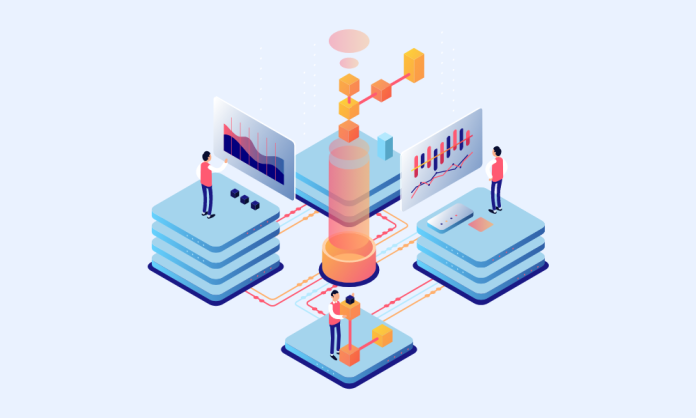Over the past few years, data science has emerged as a critical tool in the banking and finance industry. With the vast amounts of data generated by financial transactions and customer interactions, banks and financial institutions have turned to data science to gain insights into customer behavior to reduce risks and increase profits.
In addition, data science is being used to improve customer experience and engagement. By analyzing customer data, banks can identify customer preferences and tailor their products and services to meet their needs. This helps build customer loyalty and increase retention rates.
How has the data science role evolved in the banking and finance sector?
Data science techniques, such as machine learning, data mining, and predictive analytics, are being used to analyze large datasets and identify patterns that can be used to make better business decisions, including:
- Analyzing customer data to identify trends in spending and investment behavior
- Detecting and preempting fraudulent activities
- Predicting market volatility and customer preference trends
One area where data science has had a significant impact is risk management. By analyzing historical data and identifying patterns, banks can better predict and manage credit risk, market risk, and operational risk. This helps them make better lending decisions, reduce losses, and improve overall profitability.
Overall, the growing role of data science in banking and finance is transforming the industry. As banks and financial institutions continue to collect more data, the use of data science techniques will become even more important in making better business decisions and staying competitive in a rapidly changing market.
Applications for Data Science in Finance Industry
There are several applications of data science in the field of finance and banking sector, let’s discuss them below:
-
Risk Analytics
Business includes risks and these risks have become important to detect before making any decisions. Risk management has been introduced where risks that are involved in the business can be identified, assessed, and measured before time.
Having proper risk management to attain profits in business in this way it has become important to analyze risk properly. Data science use in the financial market has made an easy method to know risk management easier. The threat has become easy to detect especially for large enterprises to make strategic decisions and it is called Risk Analytics. It has become important for business intelligence and data science in Finance and Risk Analytics.
Security and trustworthiness can be enhanced using risk analytics of data science.
-
Real-time Analytics
Real-time analytics involves the use of data science techniques to analyze financial data in real-time, as it allows financial institutions to make data-driven decisions quickly and efficiently. This is crucial in the fast-paced environment of finance, where market conditions can change rapidly and decisions must be made quickly.
It is also helpful in managing, collecting, processing, and analyzing large amounts of data from various sources, including financial markets, customer transactions, and social media. This data is then analyzed using statistical and machine learning techniques to identify patterns, trends, and anomalies that can be used to inform decision-making. Apart from detecting real-time data it also plays an essential part in fraud detection, risk management, algorithmic trading, and customer relationship management. For example, real-time analytics can be used to monitor customer transactions in real-time and identify potential fraud or suspicious behavior.
-
Consumer Analytics
Consumer analytics involves the use of data science techniques to analyze consumer data and behavior to better understand customers and improve customer engagement. With the boost of digital channels, banks, and financial institutions have access to an ever-increasing amount of data about their customers, including transaction history, spending patterns, and demographic information.
Consumer analytics leverages this data to identify insights about customer preferences, needs, and behavior, allowing banks to create more personalized experiences and better target their marketing efforts.
Overall, consumer analytics is a valuable tool for financial institutions looking to better understand their customers and improve customer engagement. By leveraging the power of data science, banks can create more personalized experiences, improve customer satisfaction, and ultimately drive growth and profitability.
-
Customer data management
Customer data management with data science techniques collect, store, and analyze customer data. With the increasing use of digital channels, banks, and financial institutions are collecting vast amounts of data about their customers, including transaction history, demographics, and online behavior. Customer data management leverages this data to create a comprehensive view of each customer, allowing banks to better understand customer needs and preferences and deliver more personalized experiences.
Overall, it is a critical component of data science in the finance and banking sector. By leveraging the power of data science, banks can create a comprehensive view of each customer, enabling them to deliver more personalized experiences and better manage risk. Effective customer data management can also help banks drive growth and profitability by improving customer satisfaction and retention.
Conclusion
In recent years, we have seen data science become increasingly important in the banking and finance industry. With the availability of big data and advancements in technology, financial institutions hold data science to make informed decisions and improve their overall performance. Data science is being used to detect fraud, manage risk, personalize customer experiences, and optimize investment strategies. As a result, the role of data scientists in the banking and finance industry is growing rapidly, and they are playing a crucial role in shaping the future of the industry.



















